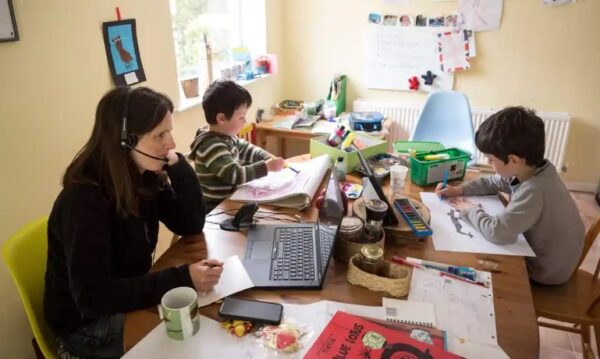Effective home schooling during Covid lockdown: Reflections of a Change Manager – By Alok Das

Source : Alok Das linkedin
 Allow me to start with a statement: I do not claim to be an expert on children’s education, nor am I proposing a new hypothesis on how you should educate your children. As a change professional and as a young father with a young family I believe that education is the biggest enablement in the life of a human being. I am clearly not fan of those so called ‘experts’ who suggest that having fun should be the only priority for a child. My belief is that the best outcome is achieved when learning is infused with fun.
Allow me to start with a statement: I do not claim to be an expert on children’s education, nor am I proposing a new hypothesis on how you should educate your children. As a change professional and as a young father with a young family I believe that education is the biggest enablement in the life of a human being. I am clearly not fan of those so called ‘experts’ who suggest that having fun should be the only priority for a child. My belief is that the best outcome is achieved when learning is infused with fun.
During the Covid lockdown, I have found this extremely challenging to balance my professional commitment and the need to ensure that my children get a quality education. I am sharing a few things I have learnt in this journey.
Know the curriculum
Talk to your child about what they teach in the school for her / his class. Is there a curriculum, weekly, fortnightly lesson plan the school has shared? If your child is not sure, ring the school.
Identify the right resources
This is probably the most challenging piece. In my experience, I have seen there are two types of parents: one group who doesn’t care anything at all what they teach in the schools and what materials they use; the other group who takes education really seriously, keeps a check on what materials / resources the school uses and, if these are not satisfactory, do their own research. I belong to the latter group.
Collect the right resources
If the school doesn’t provide enough learning materials then the most helpful place to visit is a Dymocks bookstore. They have different types of school text books available. If unwilling to visit a store, you can visit their amazing website. From my experience, your nearest Dymocks store would have the textbooks relevant to the curriculum of your state. If you want to be extra comfortable, visit the website of the education department of your state. I have provided their links at the end of this article.
Familiarise yourself with the learning resources
You do not necessarily require a teaching degree to be able to teach a child at home. As long as you have patience and are ready to do a little bit of work, you will do well. The work in this case is carefully going through the prefatory parts of the textbooks you have bought from Dymocks. The authors are all experienced teaching professionals and they explain how to use that book. Read their instructions, practice teaching a chapter to your partner so you later become comfortable teaching your children. This is not a competition, so whatever you do will add value.
Have a plan
The best way to achieve a positive outcome in my experience is diving the book chapters per day, e.g. chapter one on Monday, Chapter two on Tuesday, etc. Another way to ensure avoid boredom is rotating books, i.e. half an hour for maths, then half an hour for English, then half an hour for drawing.
Ensure breaks
To ensure your children’s mental and physical and mental health, allow them to have regular breaks.
Allocate tasks and a timeline
Tell the children how many educational tasks you expect them to complete a day, e.g. one chapter of maths by an hour, then half an hour break, then one chapter of English, then some fun time, then eat something, then some drawing for half an hour.
Check their work and give feedback
It is hard and at the end of the day, you are awfully exhausted. But still check at least some part of their work, give them feedback in a constructive way. Appreciate what they have done well, where they can do better.
Make it a routine
Record the activities for a week, and then it will become your routine. If you continue this routine for a few weeks, both you and your children will start to love it.
Be flexible and have fun
It is important to be consistent but having fun is important too. In between children’s learning activities, you’re also jumping from one virtual meeting to another, or are working hard on a deliverable. But occasionally make time: instead of browsing your smart phone, sit next to your children, pat their back, give them a hug, make them hot chocolate, they will love it.
Links to some resources
- Dymocks bookstore
- NSW Department of Education
- Department of Education and Training Victoria
- Department for Education, Children and Young People, Tasmania
- Department for Education, SA
- Education Queensland
- NT Department of Education
- ACT Education
- WA Department of Education
Author’s note: The article originally appeared on my personal bog here.







